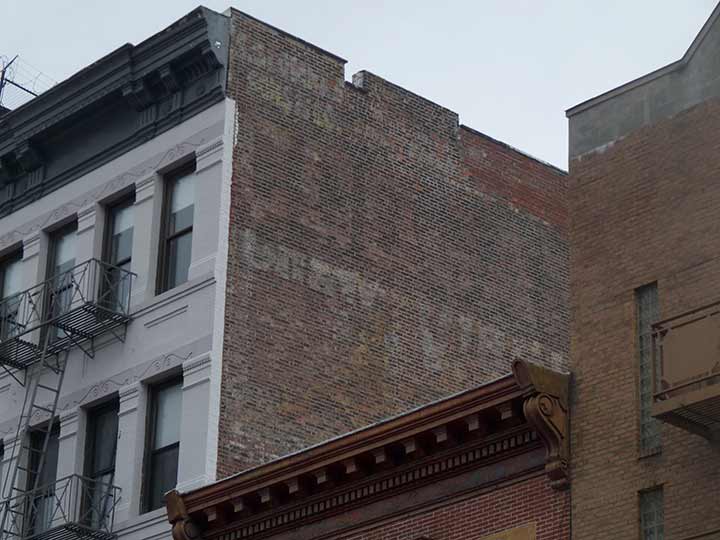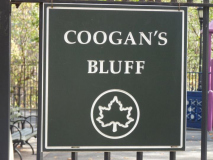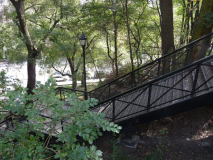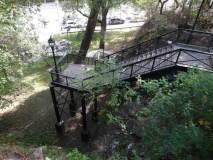
COOGAN’S Bluff is the cliff leading down to the Harlem River from Edgecombe Avenue. It used to overlook the Polo Grounds, the ballpark home of the New York Giants, and in different eras, a temporary home for both the New York Yankees and New York Mets. It is named for local real estate mogul and one-time Manhattan borough president James J. Coogan (1845-1913) and the rise was called “Coogan’s Bluff” as early as 1895. Coogan’s Bluff also became the name of a 1968 Clint Eastwood film about an Arizona lawman in NYC, the inspiration for the Dennis Weaver McCloud TV series.
A last remnant of the presence of the Polo Grounds, besides a plaque in the Polo Grounds Houses, is the John Tomlinson Brush Staircase, named for a former Giants’ owner, installed by the Giants during the 1913 season allowing fans up and down the steep Coogan’s Bluff.
In 2011, the New York City Parks and Recreation Department launched a $950,000 restoration project. Major League Baseball gave $50,000 to the project, along with other old Polo Grounds tenants — the San Francisco Giants, the New York Football Giants, the Yankees, the Mets, and the New York Jets.
Meanwhile, the painted word “Coogan” seen facing south on the east side of the Bowery near Grand is the exact same one that can be seen in old photos of the Bowery from the late 19th and early 20th Centuries. James J. Coogan operated a dry goods and/or furniture store here between Hester and Grand; 1888 photos show this painted sign in place even then, so it has survived close to 125 years. That’s the very same James J. Coogan who later owned land uptown and became Manhattan borough president and for whom Coogan’s Bluff is named.
As always, “comment…as you see fit.” I earn a small payment when you click on any ad on the site.
12/20/22





2 comments
The Polo Grounds had a long and checkered history, and sports venues with that name have been at two locations. The first incarnation was at 110th Street and Fifth Avenue in 1880, as a playing field for the then-new New York Giants baseball team. The Giants played at the Polo Grounds through the 1957 season.
Ten years later New York City’s government cut a street through the field, the Polo Grounds was relocated to 157th Street and Eighth Avenue. That wooden structure burned down in 1911 and was subsequently replaced with the steel and concrete structure that lasted until its 1964 demolition.
The Polo Grounds was more than a temporary home for the New York Yankees; the team actually played there for ten seasons (1913-1922) until the team moved to its now-famous Bronx venue. The New York Giants football team played there from 1925 until 1955; the Mets and Titans-Jets as noted used it as a temporary home through the 1963 season, before Shea Stadium opened. The Polo Grounds also hosted many college football games and boxing matches, including a 1960 bout that saw Floyd Patterson regain the heavyweight title when he defeated Ingemar Johansson. And after the Giants departure, midget car races were staged there.
Coogan’s Bluff is not a gambit.